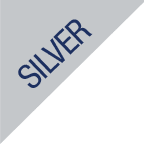
For learning executives who have developed a program that effectively integrates learning into broader talent management initiatives such as employee engagement, onboarding, succession planning, recruiting or performance management.
by Site Staff
December 6, 2016
Learning in Practice Awards 2016
For learning executives who have developed a program that effectively integrates learning into broader talent management initiatives such as employee engagement, onboarding, succession planning, recruiting or performance management.
DIVISION 1
 Susan Bowrah, Associate Vice President, Leadership Development and Talent Management, TD
Susan Bowrah, Associate Vice President, Leadership Development and Talent Management, TD
In a rapidly changing environment marked by digital transformation, regulations and new customer expectations, financial institutions need diverse talent to compete successfully in the industry. TD had plenty of talent, but individuals lacked the skill sets necessary for future internal leadership succession.
 In response, three years ago a team led by Susan Bowrah, associate vice president of leadership development and talent management, established the pipeline talent mandate. The accelerated development program was created to equip senior managers and entry-level executives with important capabilities and establish a strong leadership pipeline.
In response, three years ago a team led by Susan Bowrah, associate vice president of leadership development and talent management, established the pipeline talent mandate. The accelerated development program was created to equip senior managers and entry-level executives with important capabilities and establish a strong leadership pipeline.
Using data from every leadership level in the company, Bowrah and the talent management team identified key capability gaps. After developing a leadership capability profile on what the company sought in its executives, high-potential managers and executives were identified through self-assessment and other means to be sure program resources were invested in the right talent.
With all of these factors in mind, they designed and implemented a series of learning interventions for pipeline talent employees. Offered selectively based on leadership levels, programs included business case work with local nonprofits, skill building classes and mentoring sessions with senior leaders. The talent management team also identified key deployment opportunities to help high-potential employees further hone their skills.
Currently 97 percent of pipeline talent program participants have taken part in at least one of the activities offered. The program also helped identify key internal successors and has built up a diverse pool of talent.
—Nidhi Madhavan
 Debra Ross, Assistant Vice President, Learning and Organizational Development, BNSF Railway Co.
Debra Ross, Assistant Vice President, Learning and Organizational Development, BNSF Railway Co.
Operating one of the largest North American railways, BNSF had always set strict safety standards for its workers. But the railway wanted to shift from a culture of compliance to true employee engagement and commitment to safety.
To achieve this goal, BNSF launched the Approaching Others About Safety initiative, a development program using peer-led training sessions to promote open dialogue. Led by Deborah Ross, assistant vice president of learning and organizational development, BNSF chose 450 union employees to be trained as program facilitators. After learning the program content, they led unit-specific sessions with their own teams.
These sessions taught effective communication strategies and encouraged workers to start conversations with peers, supervisors and other units to ensure that both negative and positive safety behaviors were addressed. To date, more than 35,000 employees have participated in the program, which has improved employee performance satisfaction as well as safety.
—Nidhi Madhavan
 David Sylvester, Senior Director, Global Learning and Development, Booz Allen Hamilton
David Sylvester, Senior Director, Global Learning and Development, Booz Allen Hamilton
When consulting firm Booz Allen Hamilton wanted “more leaders faster,” Director David Sylvester and the leadership development team built a leader excellence program for senior associates with an action-learning focus and an additional component for women. This created a diverse talent pipeline and helped 58 percent of participants move on to broader roles.
—Nidhi Madhavan
DIVISION 2
 Julie Kline, Former Associate Vice President, Human Resources, Hamline University
Julie Kline, Former Associate Vice President, Human Resources, Hamline University
Business and higher education don’t always see eye-to-eye. Yet efforts at Hamline University in Minnesota to equip educational leaders with proven business practices revitalized the efficiency and spirit of the organization.
 Hamline faced a triple threat: enrollment had dropped, key leaders left, and the human resources department functioned inefficiently. All of this contributed to a culture of disengagement and a lack of accountability. The university acted decisively to turn these tides. They hired a new HR team comprised of leaders from corporate settings, including Julie Kline, Lynn Willmert, and Emilee Sames.
Hamline faced a triple threat: enrollment had dropped, key leaders left, and the human resources department functioned inefficiently. All of this contributed to a culture of disengagement and a lack of accountability. The university acted decisively to turn these tides. They hired a new HR team comprised of leaders from corporate settings, including Julie Kline, Lynn Willmert, and Emilee Sames.
Employees wanted more professional development, but getting such a program approved by everyone at the university would have taken months. Instead, the team piloted a curriculum based on common business strategies they knew would be successful at Hamline.
The Emerging Leaders program brought in 15 participants from various departments to attend four, two-day workshops on self-development, management and leadership. The workshops included external speakers they were able to book without straining the budget by reaching out to influential alums who were eager to help, and by offering cost-effective benefits such as free classes and housing.
Post-program, several leaders who had begun searching for other positions decided to stay at Hamline. The workplace culture improved as well, as teams communicated more effectively, and employees felt a greater sense of trust in the administration.
—Nidhi Madhavan
Tim Laube, General Manager, Kroff Inc. 
In the insulated chemical industry, companies like to steal employees away from one another. This makes building and maintaining a skilled workforce difficult. But chemical company Kroff Inc. knew that by offering millennials the job clarity and growth opportunities they desired, it could engage current employees and attract new talent.
Led by General Manager Tim Laube, the company launched the Kroff FastTrack Career Accelerator Program, which integrated recruitment, onboarding, training and development into one holistic system for employee attraction and development. In addition to positioning Kroff as an attractive employer to applicants, it also gave all 375 current employees access to FastTrack tools to help them understand their career opportunities, track their performance, and learn more about the company culture.
Since the FastTrack program launched two years ago, the employee retention rate has improved by 75 percent, and 25 new employees have joined the company.
—Nidhi Madhavan
 Deborah McCuiston, Director of Learning and Organizational Effectiveness, Virgin America
Deborah McCuiston, Director of Learning and Organizational Effectiveness, Virgin America
In just seven years, Virgin America succeeded in creating not only an airline people loved but also a strong employee culture. But as it matured from a start-up to a publicly traded company in 2015, they knew it needed to evolve its workforce by finding the right talent, building leadership skills and deepening engagement.
Led by Deborah McCuiston, director of learning and organizational effectiveness, a core team at Virgin America performed a comprehensive gap analysis to determine how the organization could meet these goals. Their findings helped them develop unique tactics, including a new employee value proposition that set expectations for employees and the organization and fostered mutual trust.
Despite uncertainty following the company’s acquisition by Alaska Airlines, newly hired employees and managers still reported positive experiences with the program, and McCuiston was invited to present the organization’s work at the Gallup Leadership Conference last fall.
—Nidhi Madhavan
 Adam Shandler, Talent Acquisition and Talent Development Leader, Dr. Reddy’s Laboratories, North America
Adam Shandler, Talent Acquisition and Talent Development Leader, Dr. Reddy’s Laboratories, North America
Midlevel employees at Dr. Reddy’s Laboratories in New Jersey had leadership potential, but many lacked the training needed to move up. Adam Shandler created the Management Development Program to give talented managers access to classroom sessions and individual coaching. The program led to four promotions within a year.
—Nidhi Madhavan



